Palace of the Grand Master of the Knights of Rhodes
Rhodes castle on the Avenue of the Knights is the dominant feature of the medieval walled city. This 14th century palace of the Grand Masters was occupied by the Knights of St. John, also known as the Knights of Rhodes from 1310 until 1523. Their presence influenced the character of the city with its walls, gates, churches, hospitals, and palaces.
The Gothic style medieval castle once functioned as the knight’s headquarters and a fortress as well as a palace. The castle was initially built during the 7th century as a Byzantine citadel and fortress on the foundations of an ancient temple of the Greek sun god Helios. After the Knights Hospitaller occupied Rhodes and other Greek Islands they were named the Knights of Rhodes. They turned the fortress into the palace of their grand master and administrative headquarters. They made numerous modifications and repairs early in the 14th century, but the castle was damaged in an earthquake in 1481 so they had to repair it again.
Knights Hospitaller were initially associated with a hospital and cared for sick and poor people. Over time they became more militant, participating in the crusades and defending the holy land as well as providing escort for pilgrimages to it. After their fortresses in the holy lands fell they found refuge in Cypress, but had no power there. With the approval of the pope and the king of France they took Rhodes over from Greece after much fighting and many deaths on both sides as their presence had not been approved by the Greek emperor. Later they were called the Knights of Rhodes and defended against a succession of enemies including Barbary pirates, Egypt, and the Ottoman Empire. In 1522 the invasion fleet of Sultan Suleiman the Magnificent of the Ottoman Empire arrived. He sent 100,000 men against the island’s 7000 knights. It took the Turks 6 months to breech the ancient city’s walls and in 1523 the knights lost the siege and left Rhodes forever. The Ottoman Empire then used the castle as a command center and fortress.
An ammunitions explosion in 1856 damaged the lower level and destroyed many of the first floor rooms. It was restored between 1937-1940 when Rhodes was under Italian rule and the castle was used as a holiday residence first for the King of Italy and then for dictator Benito Mussolini, whose name is on a large plaque near the entrance.

You enter into this courtyard and find a lot of locked doors. There was only one open entrance to the inside of the castle when we were there.
In 1947 Greece obtained Rhodes and other islands in a peace treaty, and in 1948 the castle was turned into a museum. It cost us 4 euros to go inside. At first it seemed as if all there was to see was a giant courtyard, all doors off of it being locked other than one leading to a restroom, which was free to use since people have already paid to be in there. Just one stairway off in a corner next to where you pay to come in was open. That stairway led up to an assortment of rooms.
We hardly saw anyone out in the courtyard, or in most of the rooms as we went through them. We ran into a large tour group when we were nearly done looking around so at least for the most part we beat the crowd, which was likely a cruise ship excursion. They probably paid a lot more than 4 euros to see a castle within easy walking distance of the ship. If they stayed with their guide they might have found out what all the things with no explanatory signs are though.
Each room had different mosaics on the floor.
Some rooms had very fancy furnishings, others plainer furniture made of wood.
Some light fixtures had a medieval look about them, but all held electric bulbs so whether they were original features adapted to electricity rather than candles, or more modern lights made to look old I can’t say. Some looked old and others did not.
Some of the larger rooms had a series of columns in them, which were probably what once held the place up, but apparently are no longer up to the task as all of them had some bracing cables running from one to another, around each, and hooked into the walls.
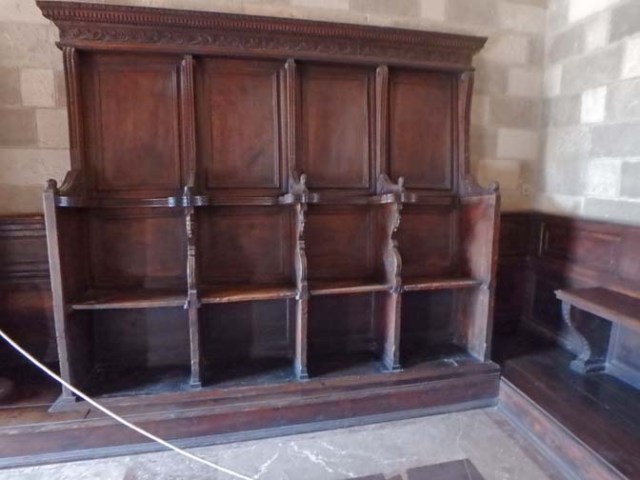
these whatsits were around the walls of an entire room as well as in some hallways, but there was never any information about what they were used for
Each room had informational signs, but they were always about the pattern of the mosaic on that room’s floor and never about anything else in the room people might be curious about – like whether the rows of what appeared to be sort of bench type thrones were where knights sat, or was a structure to hold giant vases or to store their armor or something.
While the castle was well above ground and in good shape, one room was partly full of dirt with wheelbarrows and signs about excavating, with no explanation of why that would have been necessary. Possibly because some of the mosaics are not original to the castle, but were excavated on another island called Kos. Only 24 of the castle’s more than 150 rooms are open to the public.
Some of the rooms and spaces in the castle are quite large, and it had some pretty massive fireplaces.
Rhodes Walled City
The walled city in old town Rhodes was designated a UNESCO World Heritage Site in 1988. The Knights quarter occupied about a third of the city, with the remainder where the common people lived. Apparently somebody was lacking in math skills when the Knight’s quarter takes up a third of the space. The walls stretch for 4 kilometers and have 11 gates.
Some of the streets snake through town under arches or over bridges that seem to be part of the castle, but aren’t, at least not currently. A long open parklike area under bridges sits in what was once a medieval moat, but now is dry land and greenery.
Architecture is predominantly Gothic, but also reflects the different time periods and occupations going back to the early Greeks and ruins of a temple of Aphrodite, as well as a Byzantine church and Ottoman Mosque among the cobblestone streets and stone buildings.
Old town Rhodes is the oldest occupied medieval town in Europe. Current residents live in the same buildings where people lived in medieval times. Quaint streets and alleys are interspersed with homes and businesses in these ancient buildings. Some of the smaller streets are made from small rocks rather than bricks or flat paving stones.
Open squares within the walled city are the result of World War II bombings.
Many cats live there too. Some are pets, but a lot of them are strays. The locals take care of them so even the strays have enough to eat. We saw one that was quite obese.

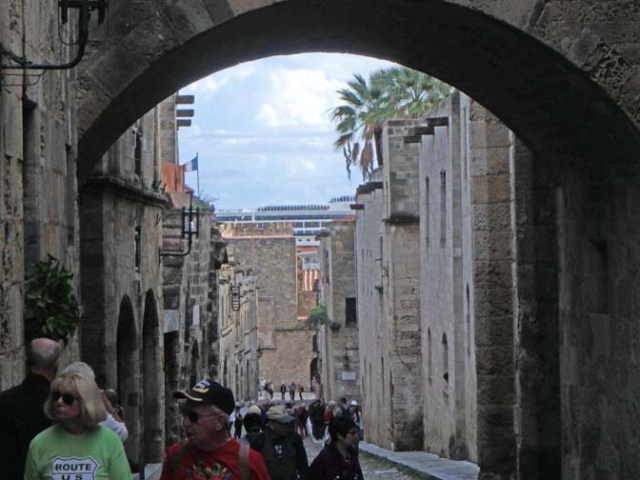

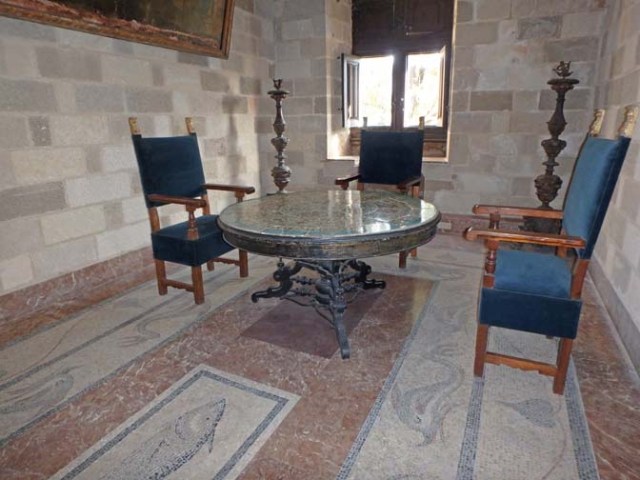
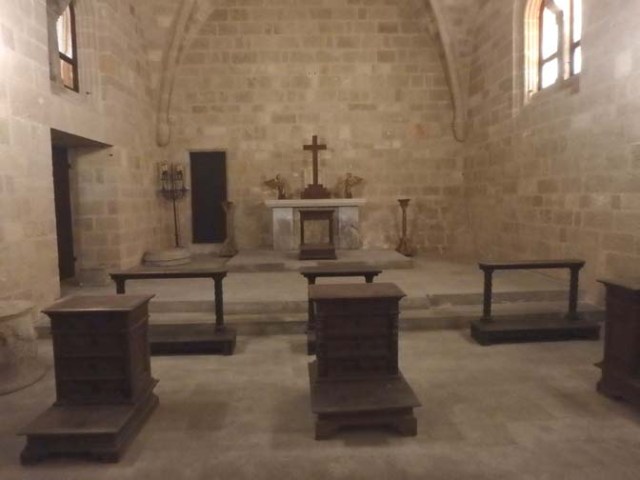
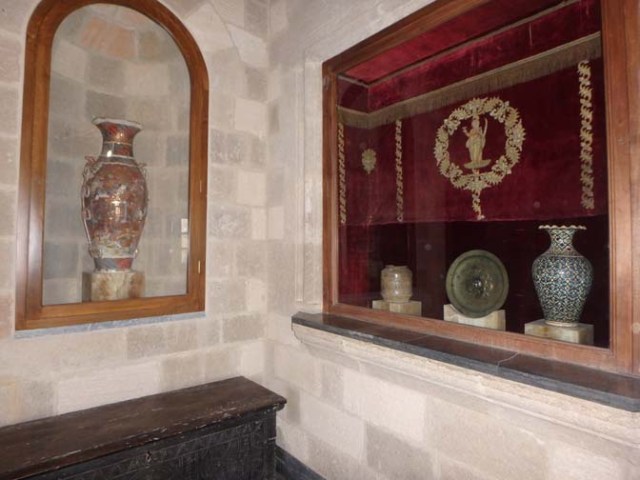
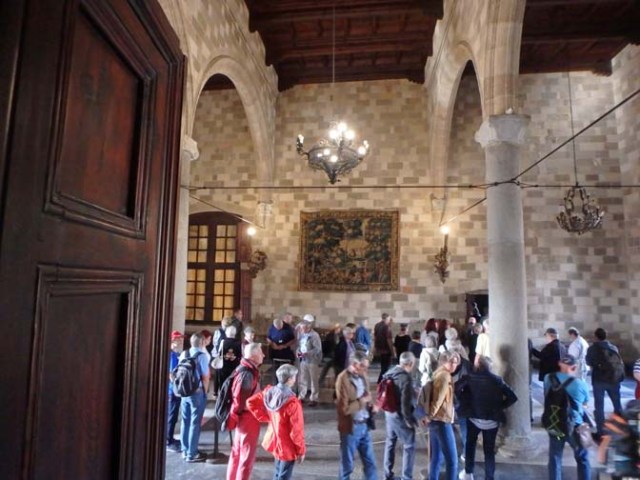

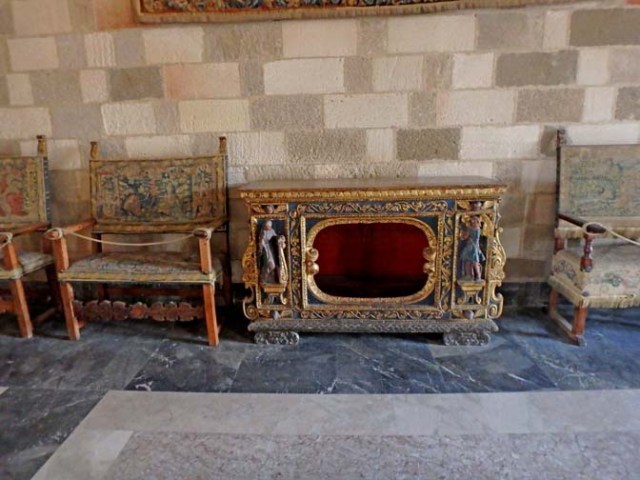
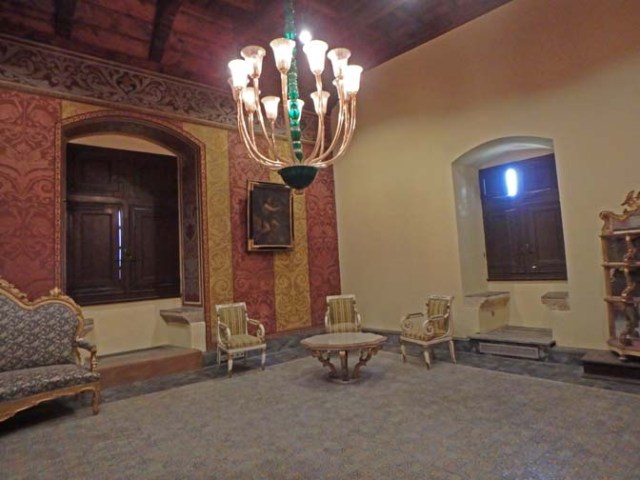
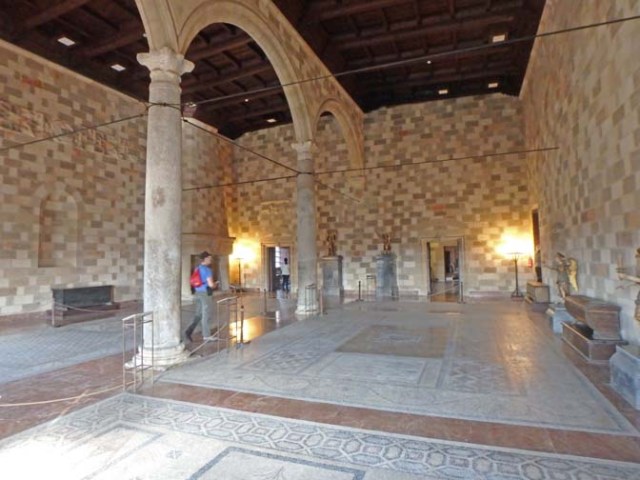
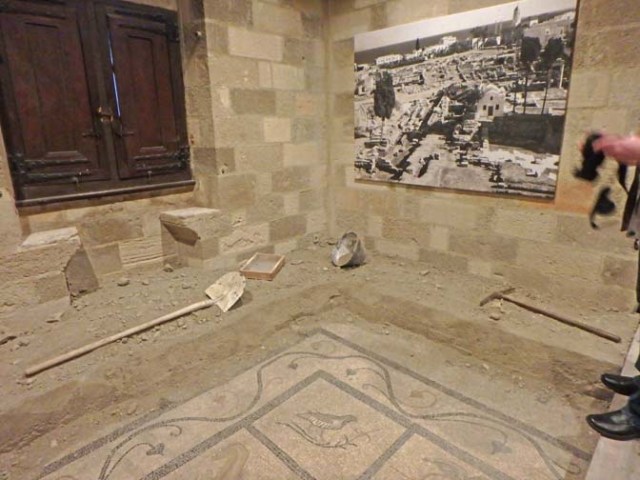

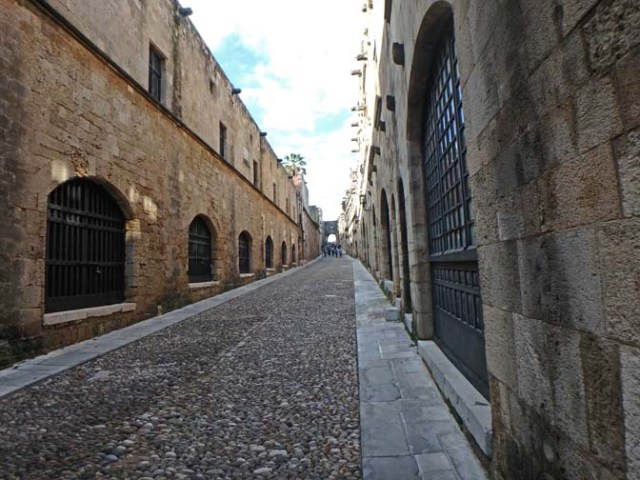
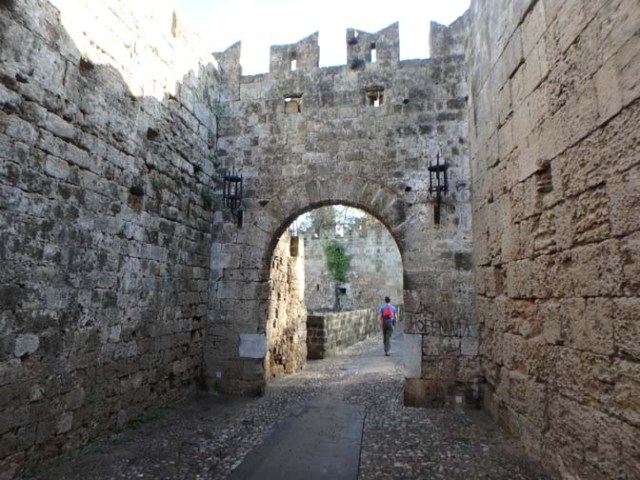
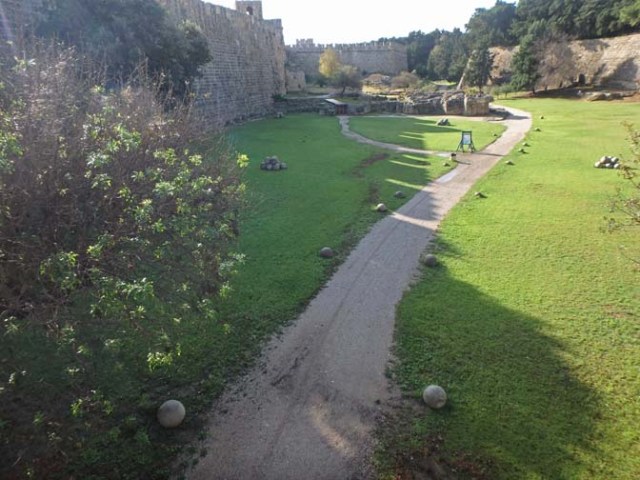
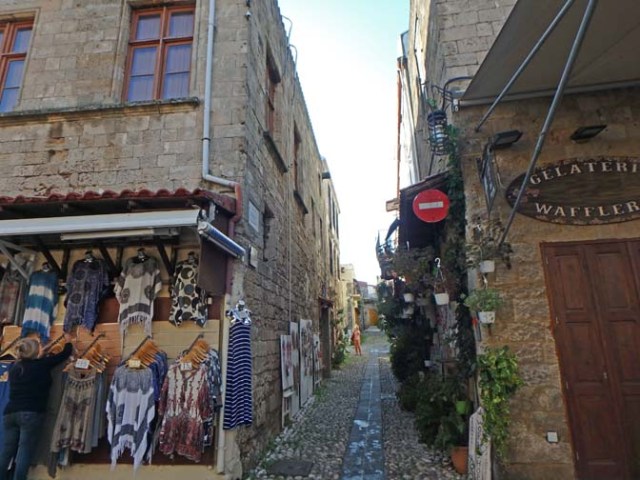
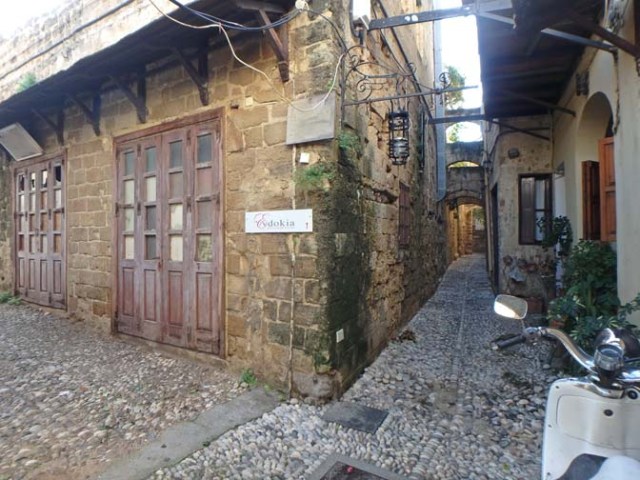
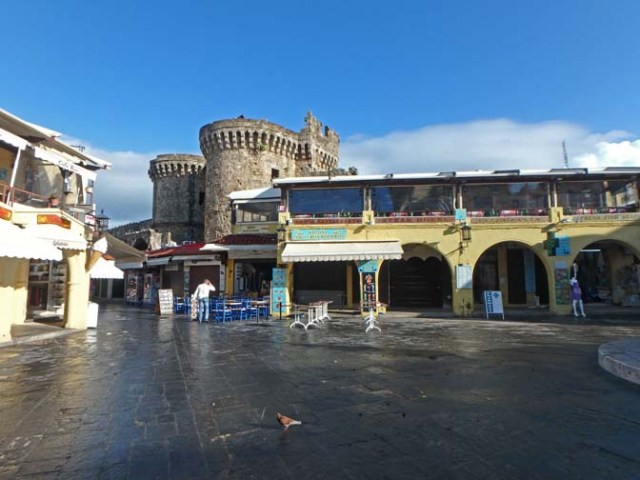
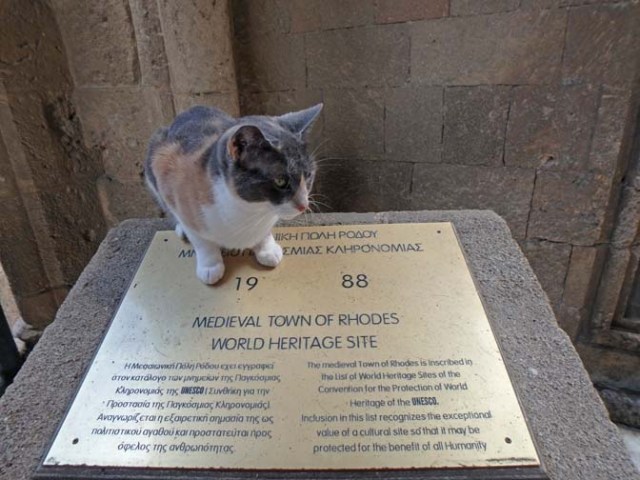
That is a beautiful place with such an interesting history -nice post!
Thanks. It’s nice when there’s something so interesting to see within walking distance of the port.
Very interesting and informative. We saw lots of cats on Santorini, too,
They seem to be prolific all over Greece.